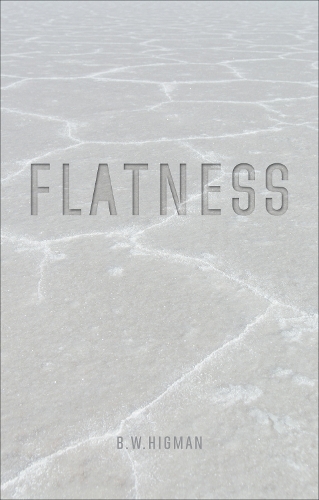
Flatness
(Hardback)
Publishing Details
Flatness
By (Author) B. W. Higman
Reaktion Books
Reaktion Books
1st March 2017
United Kingdom
Classifications
General
Non Fiction
Popular philosophy
910
Physical Properties
Hardback
264
Width 216mm, Height 138mm
Description
The modern world is dominated by flat surfaces. We write, print and project on flat paper or flat screens, which we stare at all day. We inhabit spaces constructed from
flat materials. We play sport on level fields. Engineered planar surfaces have become so pervasive and fundamental to behaviour and thought that we barely notice their existence. But flat landscapes are also often disparaged, viewed as featureless, empty and monotonous. Metaphorically, to 'feel flat' is to be bored, dull, lacking energy or inspiration.
So what is it about flatness that makes it so desirable and practical in everyday life, yet so unattractive in landscape and as an idea How has the construction of flat surfaces contributed to a degradation of visual diversity
Flatness attacks these questions by looking first at the ways humans have perceived the natural world around them, from Flat Earth theories to abstract geometric concepts and the Flatness Problem in modern cosmology.
Reviews
The most original and surprising book Ive read this year. If you thought flatness equates with dull, you were wrong . . . Superbly researched, full of erudition, each chapter utterly surprising . . . A really important contribution for understanding how we have transformed our planet in our own image. * Michael Bravo, Senior Lecturer in Geography at the University of Cambridge *
Once youve started on it, you wont be able to put it down. * Tim Ingold, Chair in Social Anthropology, University of Aberdeen *
Flatness is the uneven, fascinating work of a true scholar enthusiast. Flatness: effervescent . . . Clearly the essential element of Flatness is the notion of variance. I can think of few books where the discussion ranges from abstract expressionism to flat earth theories, microtopography and hunting. Perhaps most remarkably, given the obvious potential in the subject matter for sky-high geyser-spouting nonsense, the book is almost entirely free of sub-philosophical cant and cultural studies jargon. Even at his most polemical, Higman manages to write with admirable clarity and precision . . . The book is therefore original and surprising but also reassuringly sane and straightforward . . . There may be few readers who are willing or able to follow Higman all the way as he strides confidently across the various fields of ontology, geomorphology, physiology, theology, the philosophy of science, and discussions both of the technique of profile measurement and the meaning of musical and pictorial flatness, but those who do will find the long journey across this vast territory worthwhile * The Spectator *
BW Higman has a sixth sense: he sees flat surfaces. Be they screens, furniture, walls, streets, railways, or even level playing sports fields . . . A key premise of this book is to explore why latness, a feature found rarely in nature, is something humans have tried hard to produce in civilisation . . . Higman shows how the worlds great flat areas, such as the Australian bush and the North American prairies, are often portrayed culturally as featureless places of unease, loneliness, even madness . . . [Flatness] shines when linked to real-world issues such as the flat, low-lying countries facing the rise of sea levels and the toll of globalised industry on natural resources * Geographical Magazine *
Higman is a companionable writer and employs a mix of anthropological, historical, and artistic perspectives in his many apt descriptions of modern life in this survey of all things flat. The book may well stimulate others to probe further or to ask comparable questions about speed or brightness. Recommended * Choice *
Author Bio
B. W. Higman is Emeritus Professor of History, Australian National University, and Emeritus Professor, University of the West Indies. His many books include How Food Made History (2012) and A Concise History of the Caribbean (2011).
